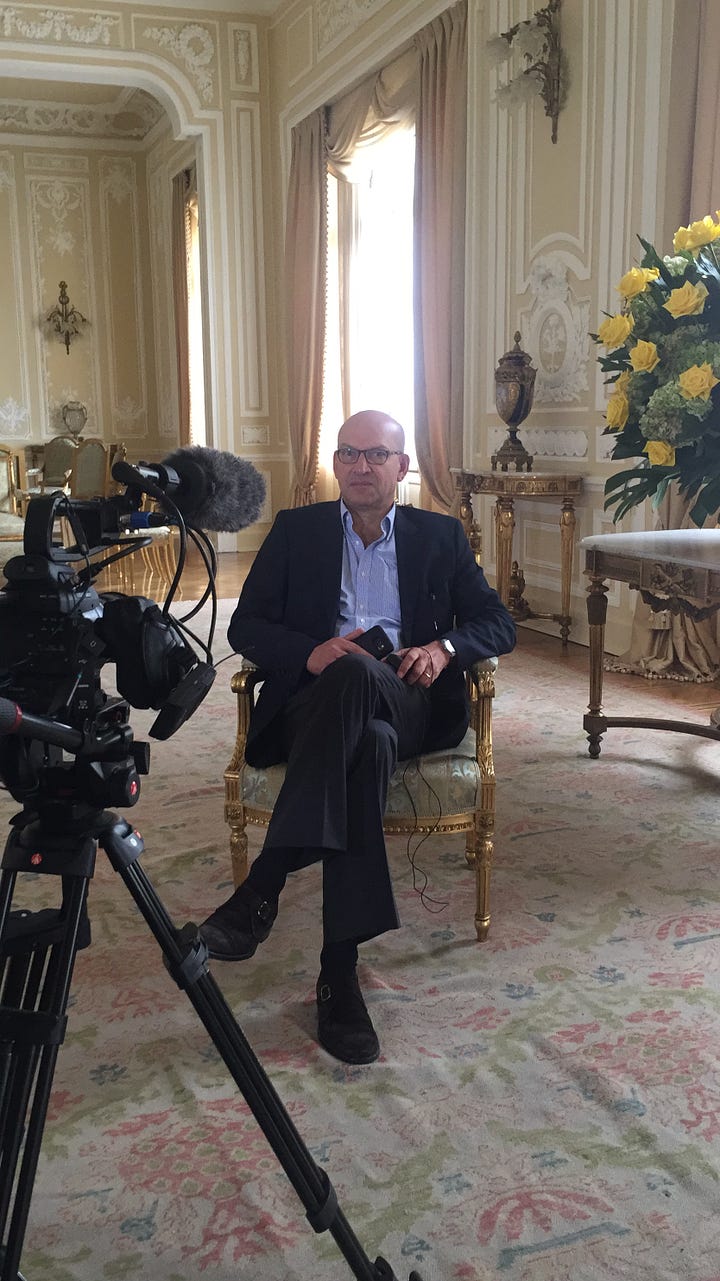
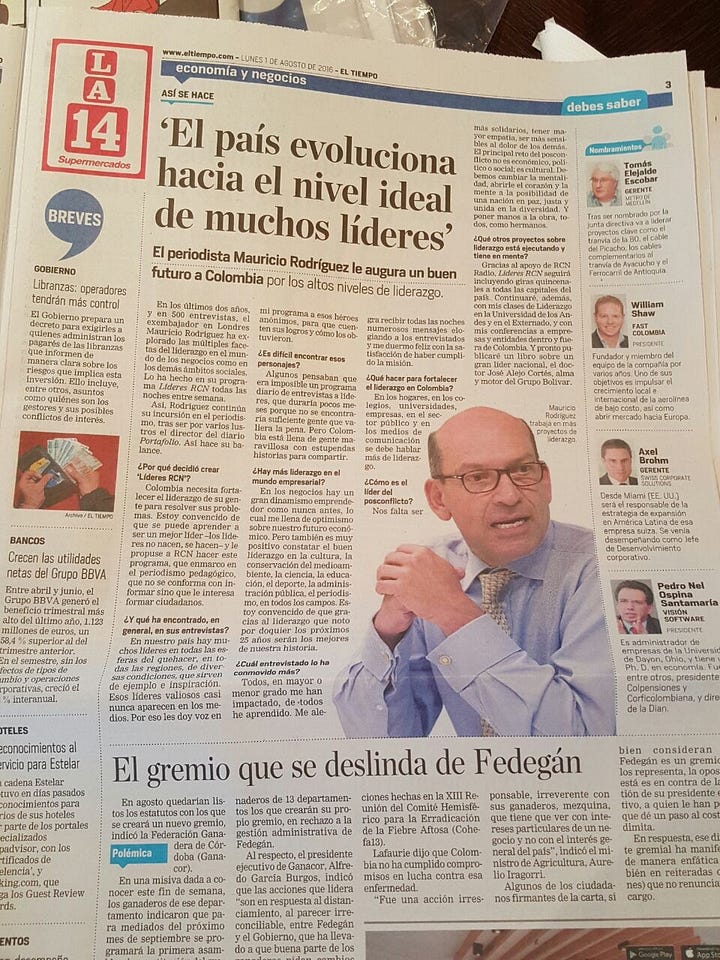
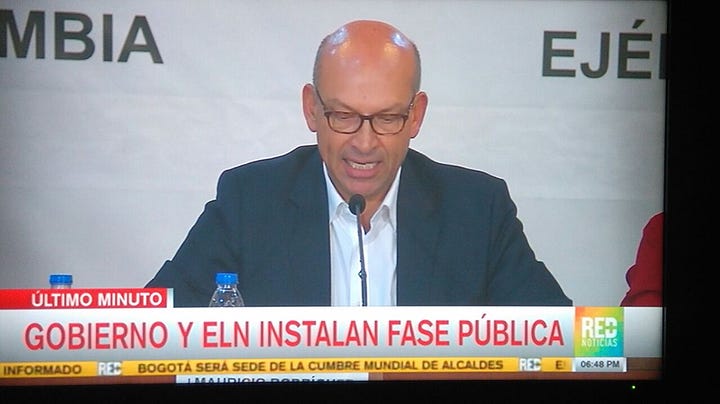
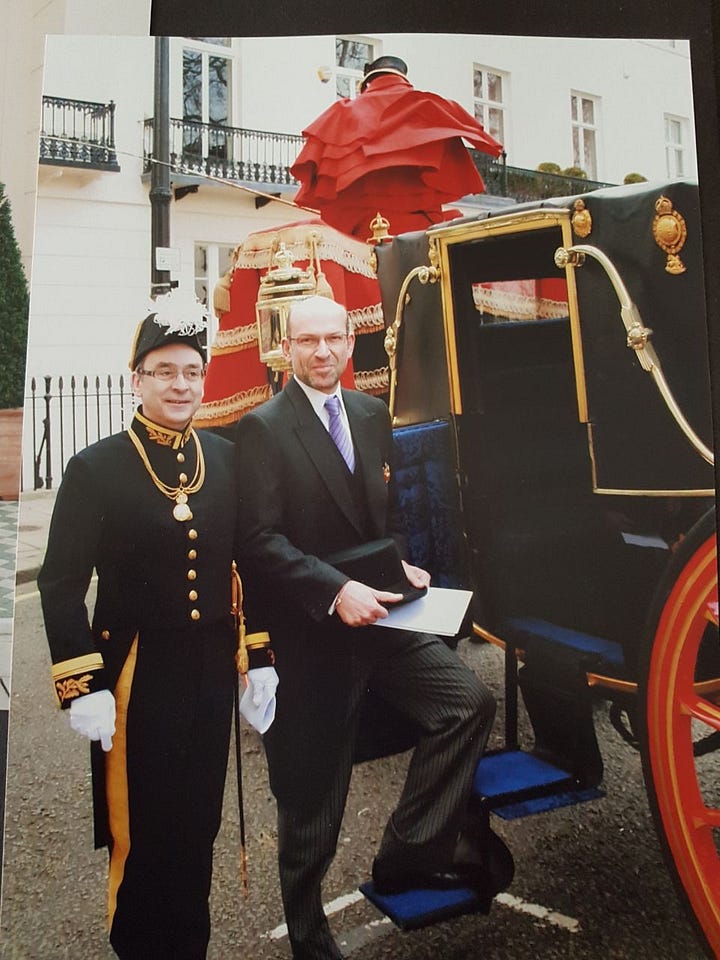
My father has been an Ambassador of Colombia, a university dean, a professor at various academic institutions, the founding director of a newspaper, and a columnist for different media platforms. His profile is not typical of a cannabis user, but during a few days in Los Angeles, I managed to convince him to try weed.
In 2018, I arrived in California after six months of backpacking through Southeast Asia. I thought I would never return to the U.S. after leaving Miami, but due to immigration issues, I had to spend some time back in the country and was intrigued by living on the West Coast. My arrival coincided with the legalization of cannabis for recreational use. The whole city smelled of weed. There were dinners, concerts, and events around the theme. A large industry was developing before my eyes, showing me for the first time what could be if we legalized the plant worldwide.
I hadn't seen my father for almost a year, and he decided to visit me for a few days; he had never been to Los Angeles and was interested in exploring the city with me. More importantly, he wanted to know how I had fared after one of the most transformative trips of my life (I returned with a diploma in yoga and as a fervent activist for veganism, an industry that was also growing rapidly in North America at the time).
The day after his arrival, we set out to explore the neighborhood. I lived Downtown (one of the few places in the city where people use their legs and not a vehicle), a district with great historical value and an unfortunately large number of homeless people. After visiting a couple of stores and bookshops (including my favorite, The Last Bookstore), we quickly passed by a window that looked like an Apple store. "That's a dispensary," I told my father, who was astonished and asked if they sold marijuana there. He couldn't believe it. To him, it looked like a high-end clothing boutique, not a dingy place where drugs could be obtained.
We entered MedMen, a dispensary that in essence had a name inspired by the big agencies of Madison Avenue during the golden age of advertising, along with an advanced, clean, and modern aesthetic, far from the stereotypes associated with the plant. The workers were mostly young, good-vibes people carrying iPads with detailed information about each product, from flowers you could view with a magnifying glass at one of the counters, to all kinds of edibles and drinkables—gummies, chocolates, sodas—as well as topical products for the skin and muscles.
We bought a couple of vaporizers, some flower, and a can of soda that my father found at the last minute. "Be careful, this can has 45mg of THC. You can't drink it all at once." As a reference, he showed us some 5mg gummies, the standard dose that can even be too much and create uncomfortable situations for people not used to consuming cannabis. "Drink it in small sips, over several days." Aware that ingesting THC is more intense than smoking it (the liver converts THC into 11-hydroxy-THC, a more potent metabolite, which often results in more intense and prolonged effects), I made sure that my father "just wet his lips," as he told me in my adolescence when he invited me to try my first wines or beers.
And so it was for the first few days. Before going out to explore the city, he would take his sip, and I would drive him around the PCH highway, to eat vegan pizza in Los Feliz, or to the Hollywood hills to see the city. The soda level dropped a little each day, but my father barely felt the effects. "A bit more relaxed, but nothing special," he would tell me when I asked. Gradually, he gained confidence in the matter and tried the other products, always with a mild and pleasant result. On the fifth day, two days before my father returned to Colombia, he drank the last gulp of the soda (an amount that was more than a shot) where the cannabinoids had accumulated.
Most of the day went by without any problems, but it was after leaving the LACMA museum that we stopped to say hello to a friend who had a café/yoga studio nearby. As we sat down, I noticed my father tense and found it strange that he hadn't taken off his sunglasses since we entered. He was slow to answer and his responses were very short; he also ordered a double espresso, something I had never seen him do. Suddenly I connected the dots and understood what was happening: the weed had just hit him. Without making a big fuss to avoid scaring or embarrassing him, I made up that we had movie tickets and had to leave soon.
As soon as we left the place, I asked my dad if he was okay. "Something is happening to me," he said with the driest mouth I had seen in years. "I think I'm having a stroke." I told him not to be exaggerated, that he was just high. "I have something in my head," he repeated. "You have paranoia from what you're feeling, it's normal. I'm here and everything is going to be fine," I replied, aware of what was happening. I told him to calm down, breathe, and drink water. He was experiencing the common cottonmouth, one of the harmless possible effects of cannabis. I got him in the car, made sure he was comfortable and hydrated, and took him home. I bought him some snacks and a couple of drinks with electrolytes and told him to lie down in bed, to rest. Hours later he woke up very confused about the experience he had lived. I congratulated him for surviving his first bad trip.
A few weeks later I flew to NYC to visit my brother, whom I also hadn't seen in several months. I remember it was a Friday night when we got the call. We were leaving dinner on our way home when my dad rang us. "Are you with your brother? Put it on speaker, we have to talk." We stopped dead in our tracks. His voice sounded strange. "They found a tumor in my brain. I'm having surgery on Monday." We didn't even hang up and we were already back home packing, ready to head to the airport and meet my father in Bogotá.
When we met in California my father mentioned he had been unable to sleep well for several months. His anxiety had increased and he looked tired. He also had some minor ailments, according to the different doctors he consulted after feeling tired for a long time. Despite several lab tests and MRIs, nothing had come out wrong. But during his cannabis trip in Los Angeles, his body began to speak to him. More than having been extremely drugged, the day that soda hit him he felt a kind of short circuit on the right side of his head and as soon as he returned to Colombia he requested a CT scan to look at his brain in detail. Cannabis had warned him about the problem: attached to his Trolard vein, one of the most important in the brain, a golf ball-sized tumor had grown. It had to be surgically removed with a very delicate cranial operation.
The few days we spent together before his surgery felt like a limbo between the surreal and the normal; we had to sign legal papers and get things in order, as there was a risk that my dad would not come out well from the surgery—or not come out at all. A few days ago I asked my father what he thought before he was anesthetized and he replied: "I asked for everything to go well and to be able to see my children again, but I also recognized that if that were my last moment in the world I would accept it full of gratitude for everything I had lived." Fortunately, the surgery went smoothly despite its high level of risk, and apart from a huge C-shaped cut in his skull and 32 metal staples holding the skin together to heal, there were no major complications.
My brother and I were the first to see him. He was still anesthetized but conscious enough to recognize us; he began to cry with happiness. He had been given another chance. When I asked him what he had seen during the surgery, he said he had entered a room with three-dimensional depth in the style of a painting we had seen at the Broad Museum in Los Angeles. The artwork he referred to was by Anselm Kiefer and was titled "Deutschlands Geisteshelden," or "spiritual heroes of Germany." He drew it in a note (see image below) in which he wrote:
Hello! I'm fine
Thanks to God, the doctors, and you!!
Kisses,
(Signature)
Below is the drawing he saw during the surgery, and the following words:
It’s missing perspective... similar to the painting we saw at Broad Museum I took of Sa
Spiritual Heroes
But cubist!!
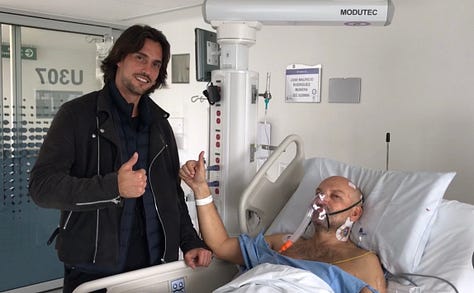
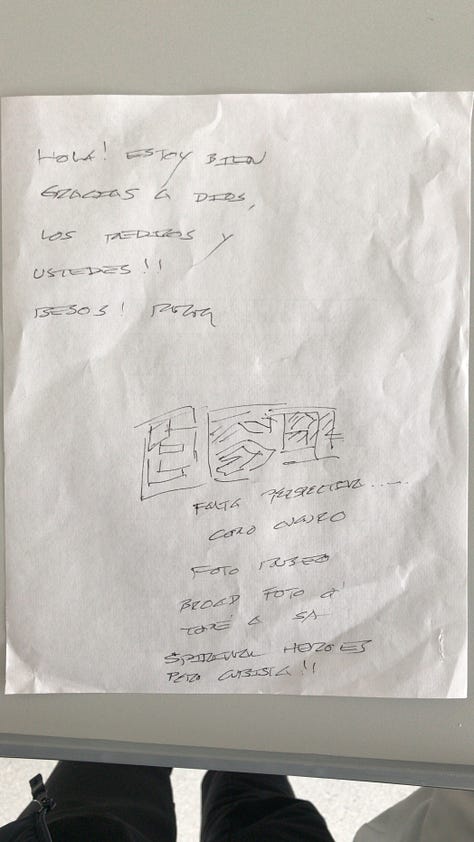
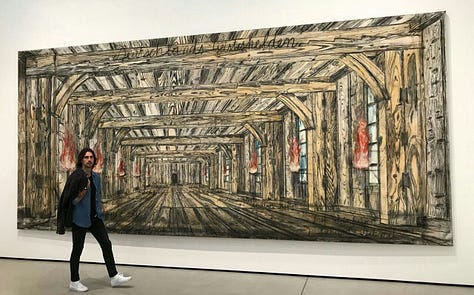
Today my father is doing great, working harder than ever to share a message of peace through leadership (one of his specialties). It was through his work that many years ago I understood the importance and value of ending the War on Drugs and achieving a change toward a responsible paradigm to save lives. That is why it is important to recognize and value the power of entheogens, understanding that framed under spiritual and ritualistic contexts they can be tools of enormous value to develop compassion and empathy. That's how my father tells it: cannabis saved his life.
Mi padre ha sido Embajador de Colombia, decano de una universidad, profesor de varias instituciones académicas, director fundador de un periódico, y columnista de diferentes medios. Su perfil no es el típico de un consumidor de cannabis, pero durante unos días en Los Ángeles, lo logré convencer de probar la yerba.
En el 2018 llegué a California luego de seis meses de mochilero por el sudeste asiático. Pensé que nunca regresaría a EEUU después de dejar Miami, pero por temas migratorios debía pasar un tiempo de vuelta en el país y me llamó la atención vivir en la Costa Oeste. Mi llegada coincidió con la aprobación del cannabis para uso recreativo. Toda la ciudad olía a cannabis. Había cenas, conciertos, y eventos alrededor del tema. Una gran industria se desarrollaba ante mis ojos, mostrándome por primera vez un ejemplo de lo que podría ser si legalizábamos la planta a nivel mundial.
Llevaba casi un año sin ver a mi padre y él decidió venir a visitarme unos días; nunca había estado en Los Ángeles y le interesaba conocer la ciudad conmigo. Pero aún más importante, quería saber cómo me había ido luego de uno de los viajes más trascendentales de mi vida (regresé con un diplomado en yoga y siendo un ferviente activista por el veganismo, industria que por esos días también crecía velozmente en el territorio norteamericano).
Al día siguiente de su llegada, salimos a descubrir el barrio. Vivía en Downtown (uno de los pocos lugares en la ciudad donde la gente usa sus piernas y no un vehículo) un distrito con gran valor histórico y con una gran cantidad de personas en situación de calle. Luego de ir a un par de tiendas y librerías (incluyendo mi preferida, The Last Bookstore), pasamos rápidamente frente a una vitrina que parecía ser la de una tienda de Apple. “Ese es un dispensario”, le dije a mi padre, quien atónito me preguntó si ahí vendían marijuana. No me creía. Para él parecía una boutique de ropa de alta gama, no un cuchitril donde se podían conseguir drogas.
Entramos a MedMen, un dispensario que en su esencia tenía el nombre inspirado por las grandes agencias de Madison Avenue durante la era de oro de la publicidad, junto con una estética avanzada, limpia, y moderna, lejos de los estereotipos asociados a la planta. Los trabajadores son en su mayoría jóvenes de muy buena vibra que cargan con iPads donde tienen información detallada de cada producto, desde flor que puedes ver con una lupa en uno de los mostradores, pasando por comestibles y bebibles de todo tipo—gomitas, chocolates, sodas—además de productos tópicos para la piel y los músculos.
Compramos un par de vapeadores, algo de flor, y una lata de gaseosa que mi padre encontró a último momento. “Tengan cuidado, esta lata tiene 45mg de THC. No se la pueden tomar de un solo golpe”. Como referencia nos mostró algunas gomitas de 5mg, la dosis estándar que inclusive puede ser demasiado y generar situaciones incómodas en personas que no estén acostumbradas a consumir cannabis. “Bébanla en sorbos pequeños, a lo largo de varios días”. Yo, consciente de que ingerir THC es más intenso que fumarlo (el hígado convierte el THC en 11-hidroxi-THC, un metabolito más potente, lo que a menudo resulta en efectos más intensos y prolongados), me cerciorará de que mi padre “solo mojara los labios”, como bien me dijo en mi adolescencia y me invitó a probar mis primeros vinos o cervezas.
Y así fue los primeros días. Antes de salir a conocer la ciudad, se echaba su traguito y yo me lo llevaba a dar vueltas por la autopista PCH, a comer pizza vegana en Los Feliz, o a las colinas de Hollywood para ver la ciudad. La soda bajaba un poco cada día, pero mi padre apenas sentía los efectos. “Algo más relajado, pero nada especial”, me decía cuando le preguntaba. Poco a poco le fue cogiendo confianza al asunto y probó los otros productos, siempre con un resultado leve y ameno. Como al quinto día, dos antes de que mi padre regresara a Colombia, mi padre tomó el último cuncho de la gaseosa, una cantidad que era realmente más de un quinto donde los cannabinoides se habían acumulado.
La mayoría del día transcurrió sin ningún problema, pero fue luego de salir del museo LACMA que pasamos a saludar a un amigo que tenía un café/estudio de yoga cerca. Al sentarnos con noté a mi padre tenso y me pareció raro que no se hubiera quitado los lentes oscuros desde que entramos. Se demoraba en contestar y sus respuestas eran muy cortas; también pidió un espresso doble, algo que jamás lo había escuchado hacer. De repente conecté las ideas y entendí lo que estaba pasando: le acababa de pegar la ganja. Sin hacer mucho escándalo para no asustarlo ni hacerlo quedar mal, me inventé que teníamos entradas para cine y que debíamos irnos pronto.
Apenas salimos del lugar le pregunté a mi papá si estaba bien. “Algo me está pasando”, me dijo con la boca más seca que hubiera visto en años. “Creo que me está dando un derrame cerebral”. Le dije que no fuera exagerado, que estaba high. “Tengo algo en la cabeza”, me repetía. “Tienes es paranoia por lo que estás sintiendo, es normal. Estoy aquí y todo va a estar bien”, le contesté, al tanto de lo que realmente estaba pasando. Le dije que se calmara, respirara, y bebiera agua. Estaba sintiendo el común cottonmouth (boca de algodón), uno de los posibles efectos inofensivos del cannabis. Lo subí al carro, me aseguré que estuviera cómodo e hidratado, y lo llevé a casa. Le compré algunos snacks, un par de bebidas con electrolitos, y le dije que se echara en la cama, a descansar. Horas después despertó muy confundido con la experiencia que había vivido. Yo lo felicité por haber sobrevivido a su primer bad trip.
Unas semanas más tarde volé a NYC para visitar a mi hermano, a quién también llevaba varios meses sin ver. Recuerdo que era un viernes en la noche cuando recibimos la llamada. Estábamos saliendo de cenar camino a casa cuando nos marcó mi papá a saludar. “Estás con tu hermano? Pon el altavoz, tenemos que hablar.” Frenamos en seco. Su voz sonaba extraña. “Me encontraron un tumor en el cerebro. Me operan el lunes.” No alcanzamos a colgar y ya estábamos de nuevo en casa empacando, listos para salir hacia el aeropuerto y encontrarnos con mi padre en Bogotá.
Mi padre llevaba varios meses sin poder dormir bien. Su ansiedad había aumentado y se le veía cansado. También tenía algunos achaques menores, según los diferentes médicos que consultó luego de mucho tiempo sintiéndose cansado. A pesar de varios exámenes de laboratorio y resonancias magnéticas, nada había salido mal. Pero durante su viaje cannábico en Los Ángeles su cuerpo le comenzó a hablar. Más que haber estado sumamente drogado, el día que le pegó esa gaseosa él sintió un tipo de corto circuito en el lado derecho de su cabeza y apenas regresó a Colombia pidió una tomografía computarizada para mirar su cabeza en detalle. El cannabis le había avisado sobre el problema: pegado a su vena de Trolard, una de las más importantes del cerebro, había crecido un tumor del tamaño de una pelota de golf. Debía ser removido quirúrgicamente con una cirugía de craneo muy delicada.
Los pocos días que pasamos juntos antes de su operación se sintieron como un limbo entre lo surreal y lo normal; tuvimos que firmar papeles legales y dejar las cosas en orden, pues había un riesgo de que mi papá no saliera bien de la cirugía—o no saliera. Hace unos días le pregunté a mi padre qué había pensado antes de que lo anestesiaron y me respondió: “Pedí para que todo saliera bien y pudiera volver a ver a mis hijos, pero también reconocí que si ese era mi último momento en el mundo lo aceptaría lleno de agradecimiento por todo lo vivido.” Por fortuna la cirugía fluyó a pesar de su alto nivel de riesgo, y aparte de un enorme corte en forma de C en su cráneo y 32 grapas de metal que sostenían la piel para que cicatrizara, no hubo mayor contratiempo.
Mi hermano y yo fuimos los primeros en verlo. Estaba aún anestesiado pero suficientemente consciente para reconocernos; comenzó a llorar de felicidad. Le habían dado otra oportunidad. Cuando le pregunté qué había visto durante la cirugía me dijo que había entrado en una habitación con profundidad tridimensional al estilo de un cuadro que habíamos visto en el museo Broad de Los Ángeles. La obra de arte a la que se refería era de Anselm Kiefer y se titulaba “Deutschlands Geisteshelden”, o “héroes espirituales de Alemania”. Lo dibujó en una nota (ver imágen abajo) en la que escribió:
Hola! Estoy bien
Gracias a Dios, los médicos, y ustedes!!
Besos,
(Firma)
Debajo está el dibujo que vio durant la cirugía, y las siguientes palabras:
Falta perspectiva… como cuadro foto museo Broad q’ tomé a Sa
Spiritual Heroes
Pero cubista!!
Hoy en día mi padre está perfecto, trabajando más que nunca en compartir un mensaje de paz a través del liderazgo (una de sus especialidades). Fue a través de su labor que hace muchos años entendí la importancia y el valor de acabar con la Guerra Contra las Drogas y lograr un cambio hacia un paradigma responsable para salvar vidas. Por eso es importante reconocer y valorizar el poder de los enteógenos, entendiendo que enmarcados bajo contextos espirituales y ritualísticos pueden ser herramientas de enorme valor para desarrollar la compasión y la empatía. Asi la cuenta mi padre: el cannabis le salvó la vida.
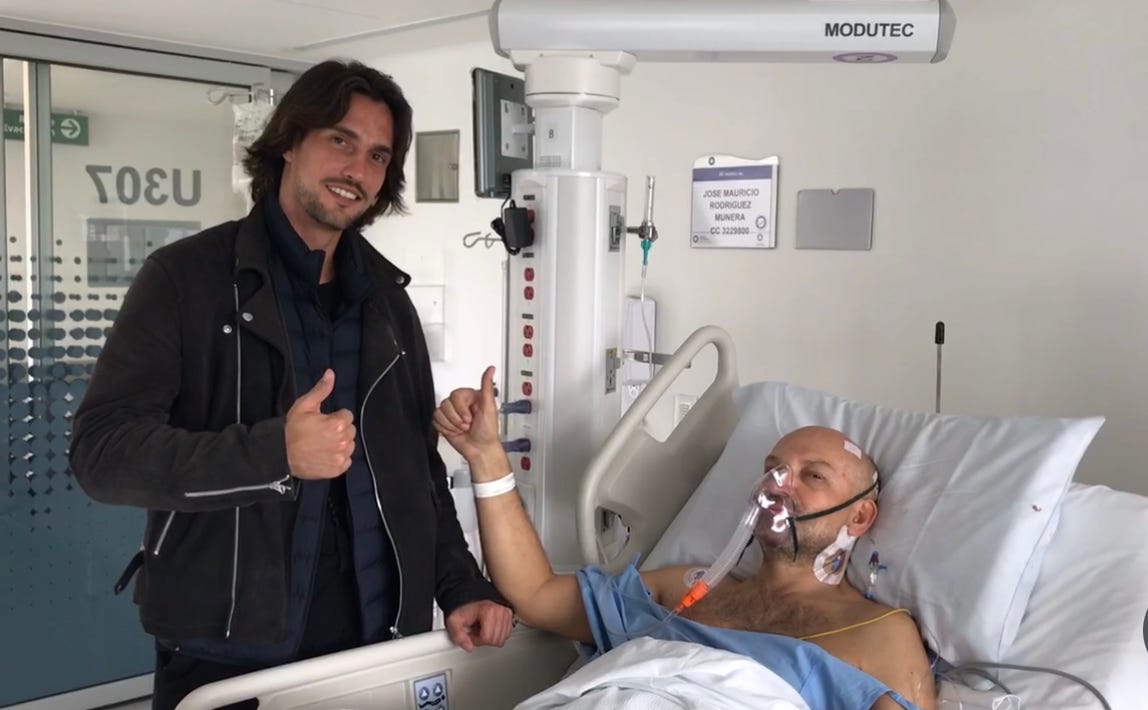




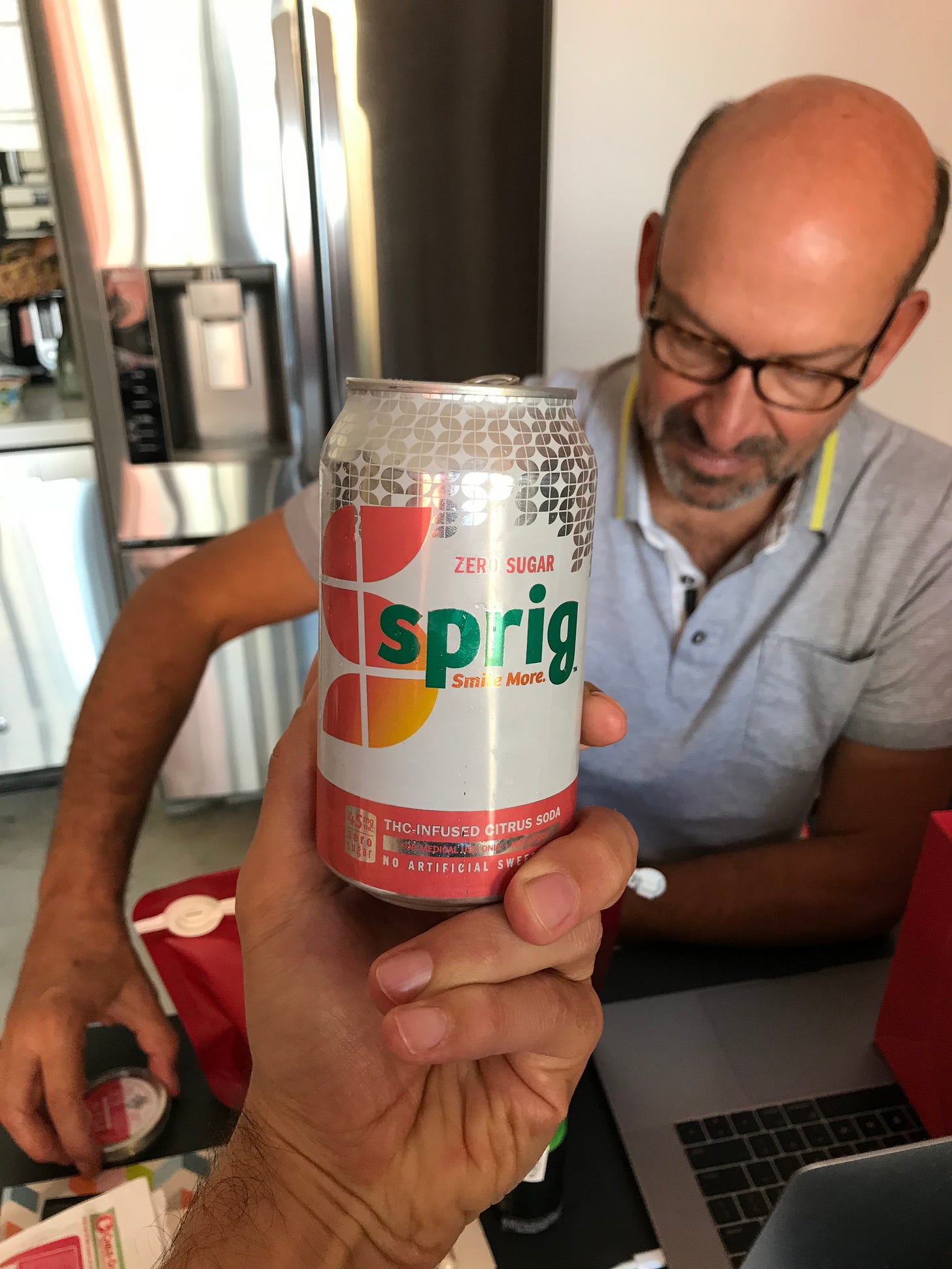
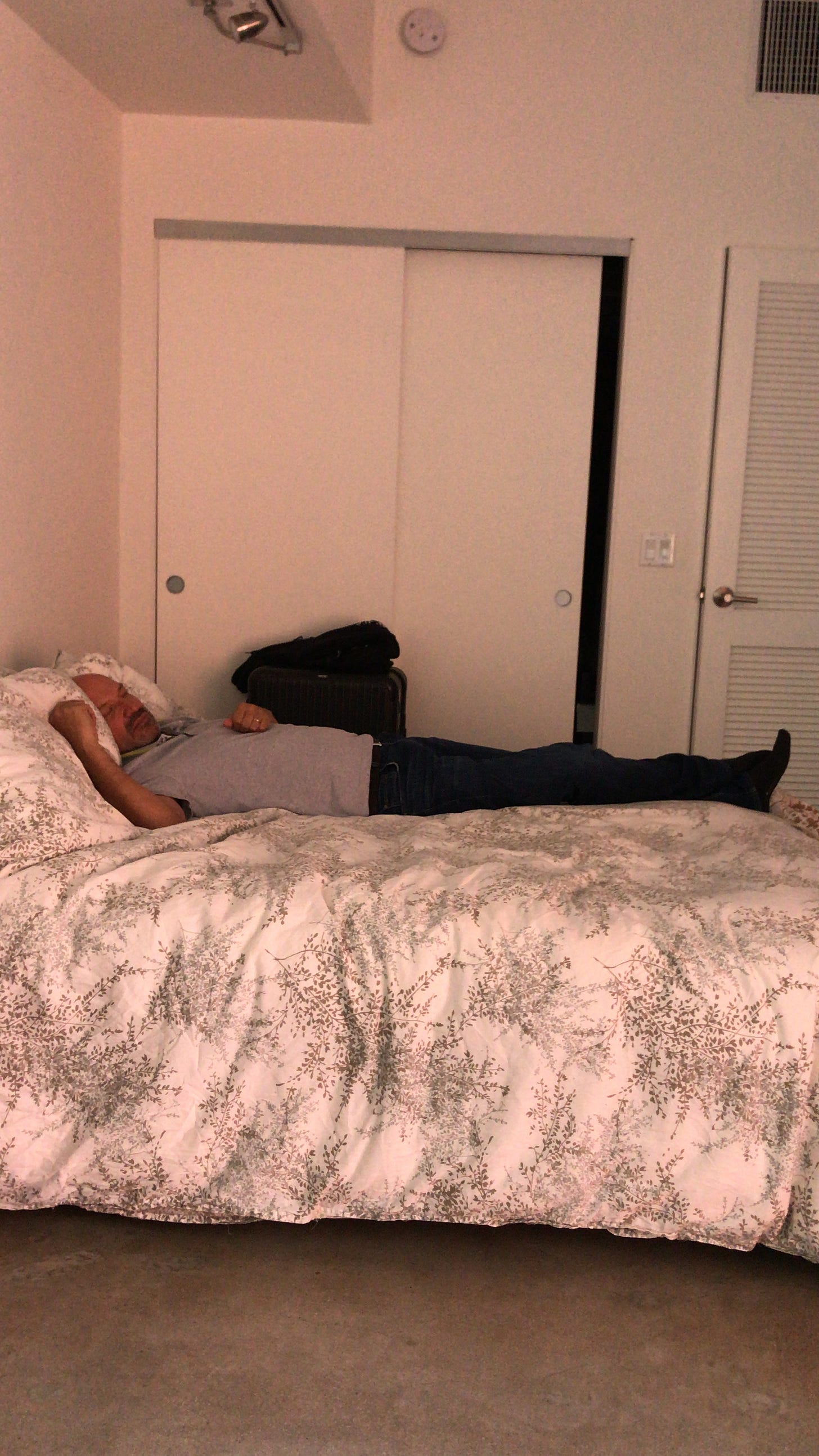
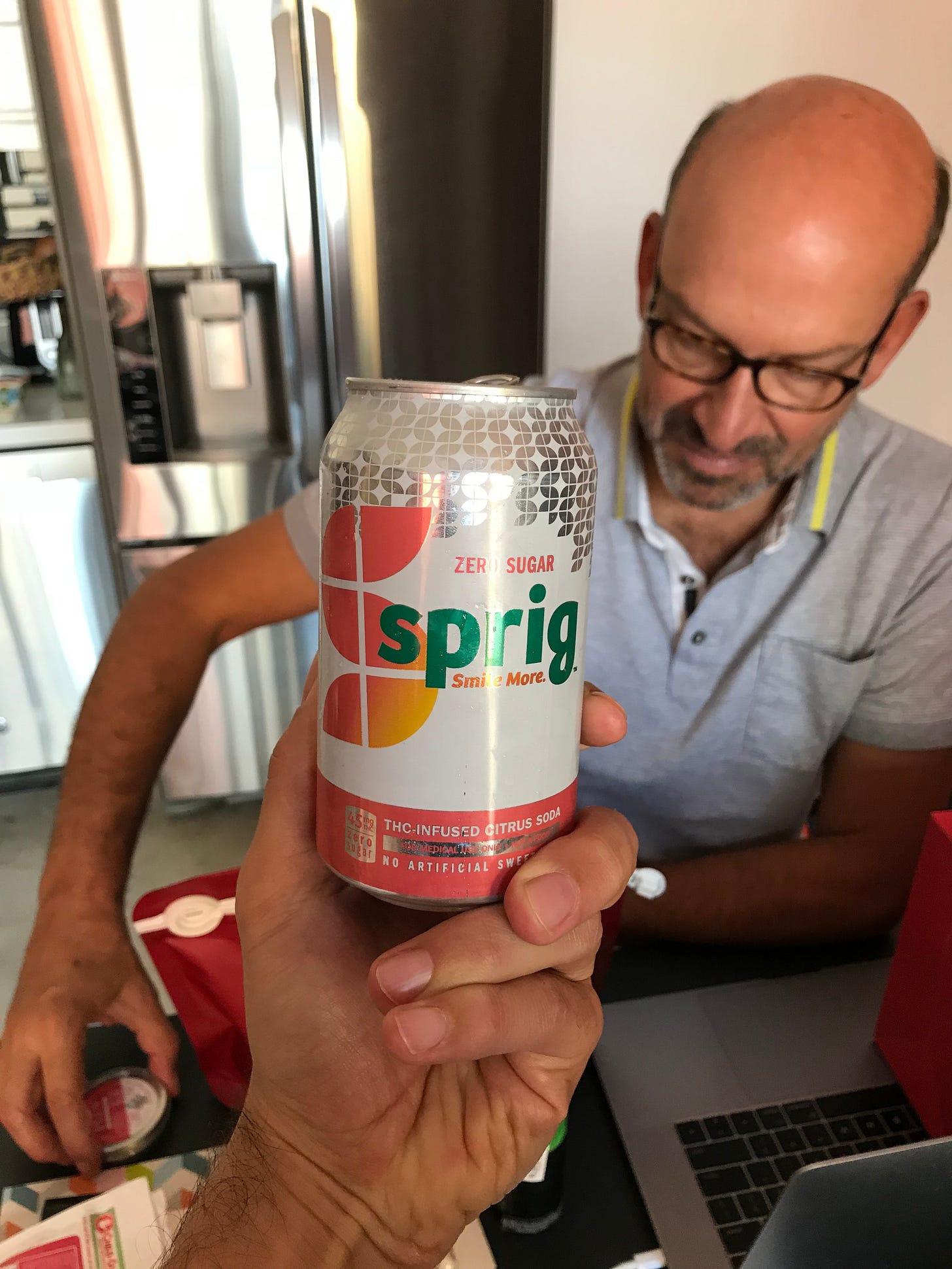
Gracias hijo, estupenda crónica de una experiencia muy curiosa, dura, chistosa, aleccionadora....lo más extraño y difícil que me ha sucedido en mi vida, besos, Pa
Gracias por compartir Santiago. That´s an amazing story. Saludos desde Mérida, Yucatán!